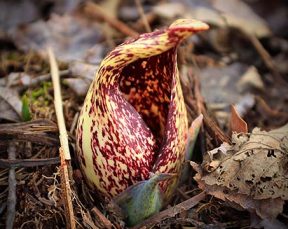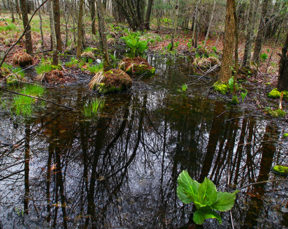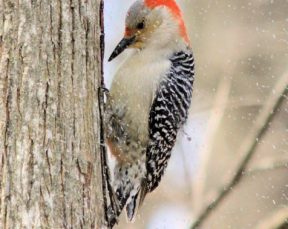By GSWA Volunteer, Jim Northrop


That was many years ago, but the memory of this seasonal gift continues. So, now as I drive around the New Jersey country-side and see apple trees coming to blossom, it brings back many very pleasant memories. Recently, I wanted to do a little research on the subject of apple trees. Here is what I learned.
In the winter, the apple tree rests. On the branches are latent buds, some of which contain leaves and others that contain small flowers. With warmer spring weather, the leaf buds unfold and flower buds begin to grow on the ends of the branch twigs.
Honeybees are attracted to the apple flowers by nectar and the scent of the pedals. As the bee collects nectar, it also picks up pollen. When the bee lands on the flower of another tree, it brushes against the pistil of the flower, leaving pollen grains on the sticky stigma. This pollen from a separate tree creates what is needed to start making an apple. Once this happens, the flower pedals fall off and an apple starts to grow.
Most apple varieties do not pollinate themselves, or any flowers of the same apple variety. This requires planting at least two different apple tree varieties close to one another so that the bees can pollinate them.
In summer, the apples grow bigger and gradually change color, and the tree produces new growth. In fall, the apples ripen. About two weeks before the harvest, the apples’ food supply from the tree is cut off and the apples become sweeter. Most apples are harvested by hand, primarily in September and October.
In the wild, apples grow readily from seeds. However, like most perennial fruits, cultivated apples are ordinarily propagated asexually by grafting. Because apples do not breed “true” when planted as seeds, grafting is generally used to produce new apple trees in the orchard of a particular apple variety. The rootstock used for the bottom of the graft can be selected to produce trees of a large variety of sizes, as well as changing the winter hardiness, insect and disease resistance, and soil preference of the resulting tree.
Here are some interesting facts about apple trees:
— More than 7500 different types of apples are grown on apple trees throughout the world.
— Apple trees are deciduous, meaning that they lose their leaves each fall and grow new leaves each spring.
— Most apple trees are found in the Northern Hemisphere.
— An apple tree takes from 5 to 7 years from a seed until the tree produces its own apples.
— Apple tree blossoms vary in color. Their brilliant colors include white, pink and yellow.
— Scientists who have studied apples and historic documents, believe that the first apples came from Asia and the Middle East. Apples were brought to North America by European settlers.
— China grows the most apples in the world, followed by the United States, Turkey, Poland and Italy.
— An apple tree will live as long as 100 years, possibly longer when they are not damaged by people, animals or weather.
— There are thousands of different varieties of apples, including Fuji, Gala, Red Delicious, Golden Delicious, Pink Lady and Granny Smith.
— Granny Smith apples originated in Australia accidentally in 1868 after a chance seeding by a woman named Maria Ann Smith.
— An average apple contains about 130 calories.
— It is believed that the saying “An apple a day keeps the doctor away” originated in Wales in the 19th century. Sadly, eating apples does not guarantee good health, but they do have nutritional value and potential health benefits.
The next time you eat some apple sauce or a juicy slice of apple pie, take pleasure in the fact that the apple family has been developing this treat for you over hundreds of years.



